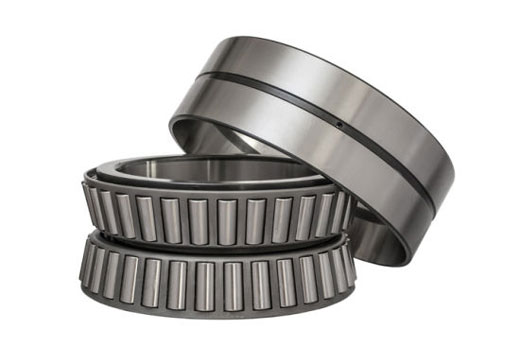Home / News / The Benefits of Double Row Tapered Roller Bearing
The Benefits of Double Row Tapered Roller Bearing
There are different types of double row tapered roller bearings available in the market. These are non-latching, mirror-image arranged, and can absorb a high axial force in both directions. Because of their mirror-image arrangement, they are separable. Double row tapered roller bearings are available as tandem arrangement or O-arrangement. The tandem arrangement is based on a pressure line contact, whereas the O-arrangement is rigid and allows a tiny overturning clearance. The bearing clearance is custom-made and can be altered with the help of a spacer ring.
Ceramic double-row tapered roller bearings
If you are interested in the benefits of a ceramic double-row tapered roller bearing, you've come to the right place. These bearings feature larger outer rings than cylindrical roller bearings and deep groove ball ones, and they are highly resistant to wear and tear. They also offer better thermal properties and require less lubrication. For these reasons, ceramic bearings are an excellent choice for demanding applications. Read on to discover what makes them a great choice for many types of industrial applications.
Ceramic double-row tapered roller bearings are available in many varieties. Single-row models contain a single or double-row cone assembly. Double-row models feature two single or double-row cone assemblies. Both single and double-row models are available in metric and inch sizes, and are highly engineered for precision and accuracy. They are commonly used in mining and other industrial applications. They also come with a number of different features, and are available in a wide variety of configurations.

Diverging double-row tapered roller bearings
Tapered roller bearings are composed of an inner ring (cone), an outer ring (cup), and several rollers. They are profiled to distribute radial and axial loads evenly. Single-row tapered roller bearings typically have a limited thrust load capacity. However, double-row tapered roller bearings can accommodate thrust loads in both directions. These bearings are configured with contact lines that either converge or diverge away from the axis of rotation.
Diverging double-row tapered roller bearing designs have a high load capacity and long lifetime, reducing maintenance and operating costs. X-life tapered roller bearings feature compact, environmentally friendly bearing arrangements and longer life spans. Those containing the suffix XL are highly reliable and environmentally friendly. In addition, they feature lower overall operating costs and a low carbon footprint. These are among the most popular tapered roller bearing designs.
Ceramic ball bearings
Ceramic double row tapered roller bearings are a great option for applications where they need to minimize friction. These bearings feature an extremely low coefficient of friction, which makes them ideal for applications where friction is an important factor. These bearings have more advantages than steel ones. Ceramic balls also require less lubrication, have a higher hardness, and generate less heat when spinning at high speeds. If you're looking for a bearing that has the highest speed and highest load capacity, consider ceramic.
This type of bearing is also highly durable. They are typically used in automobiles, rolling mills, and other rotating axles and transmission shafts. These bearings require little or no maintenance and can withstand thousands of kilometers of continuous use. Because of their superior durability, they're often used in pairs, so they can support equal axial forces in two directions. For these reasons, these bearings are often manufactured in back-to-back pairs.
Ceramic cages
Generally, the dimensional accuracy of the cage windows is affected by workpiece thickness and punch work stroke length. The machining precision also depends on the axial and side clearances. When using ceramic cages, the overall dimension deviation is smaller than with conventional steel cages. But these factors are not completely irrelevant. Other factors like the type of workpiece and its thickness can also affect the precision. In this paper, we'll discuss these issues and suggest how these factors can be taken into account when selecting bearing cage windows.
There are several materials for the cages of the double row tapered roller bearing. For instance, the brass cages are quite robust and resistant to normal organic solvents and bearing lubricants. However, they are not suitable for use in high temperatures. Other materials used as cages are glass fiber reinforced polyamides, which have good elasticity and strength. However, the lifespan of these cages decreases as the temperature increases. Other materials such as polyether either ketone are capable of withstand high temperatures and chemical attack.
- Previous: Tapered Roller Bearings Wholesale
- Next: Slewing Bearing All Types











